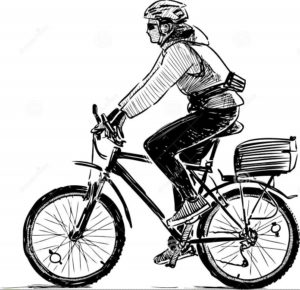 Op-Ed: By Drew Fixell, Mayor of Tarrytown and Ken Wray, Mayor of Sleepy Hollow
Op-Ed: By Drew Fixell, Mayor of Tarrytown and Ken Wray, Mayor of Sleepy Hollow
We both support efforts to increase walkability and biking in Tarrytown and Sleepy Hollow. Where we differ with the writer is in what are the best methods to encourage those objectives while balancing the other needs of the villages. Several factors strongly suggest a bike-only lane on Broadway in our downtowns (one that requires the removal of 50 or more parking spaces) is not a good idea.
First, there just is no way to deny that Tarrytown and Sleepy Hollow have parking shortages in our respective downtowns. While the shortages are not continual, during peak periods, such as during Music Hall events, on weather-cooperative weekends, and increasingly during weekday dinner hours, it has become extraordinarily difficult for both visitors and those who live in the downtown areas to find parking within reasonable walking distance of their destinations and homes. The problem is exacerbated, of course, when the weather turns cold and/or wet and is that much worse for those people who are not highly mobile, such as some of our seniors. The reality is that our downtown businesses rely in no small measure on customers and clients who do not live within reasonable walking or biking distance and arrive by cars. Similarly, much of their business occurs on days and nights when bad weather discourages all but the few hardiest souls from walking or biking. Moreover, mass transit options in Westchester are too limited to offer much relief, and in both villages, but especially in Sleepy Hollow, residential parking is at a premium.
But equally, and perhaps more, importantly, analyses of, and guides for, downtown development, including those incorporating complete streets principles, strongly argue that parallel parking on both sides of the street is a necessary component of welcoming, successful, and pedestrian-friendly/safer downtowns. For example, Step 8 in the Congress for New Urbanism’s publication, “10 Steps to Creating Complete Streets” is: ”Provide parking on-street and mid-block” with, among other things, the explanation that “On-street parking buffers pedestrians from moving cars and calms traffic by forcing drivers to stay alert.” Another urban planner (Will Novak on BloomingRock.com), critiquing a Phoenix, Arizona downtown redesign proposal, observed that “A row of parallel-parked cars creates a 2,000-lb steel buffer between pedestrians and moving vehicles.”
A 2018 book provided to both of us by BikeTarrytown.org, Jeff Speck’s Walkable City Rules: 101 Steps to Making Better Places, further supports the concept that parallel parking plays an indispensable role in promoting downtown vitality, explaining that “curb parking is an essential barrier… that protects the sidewalk from moving vehicles” and “the proper place for parking (cars) is between where people are driving and where people are walking”. Speck goes on to write that “People avoid sidewalks they don’t feel safe on, and without people on sidewalks, cities don’t thrive.”
Interestingly, Speck – a cycling advocate – notes that: “In rare instances, it makes sense to eliminate a flank of parking for a bike lane or transit lane. Except in places like New York City, where merchants don’t depend on curb parking, this needs to be understood as a tradeoff between a local benefit and a regional benefit. In some cases, the few merchants must suffer so that many commuters can thrive.” It seems clear that our downtowns are not one of the rare locations where the comfort of regional commuters should take precedence over local interests.
Though a protected bike lane seems like an attractive and progressive idea, and in many places (including areas in both villages) can be, the evidence seems overwhelming that within the context of busy downtown settings such as ours, the unintended consequence of a bike lane that requires the removal of on-street parallel parking will be to actually speed traffic and undermine the goal of creating a safe, pedestrian-friendly and vibrant downtown environment. As close monitors of our respective planning efforts know, we have been and are actively pursuing ways to enhance the walkability and bikeability of our villages while balancing those objectives with other community needs.






